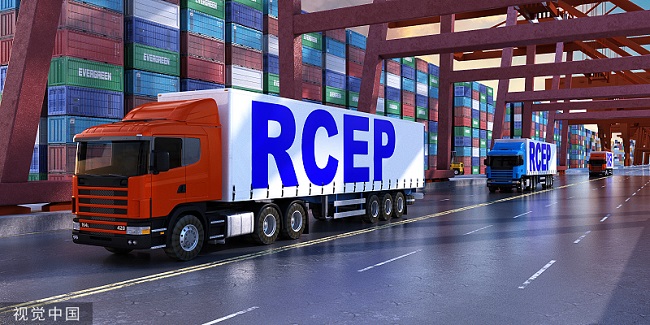
RCEP vehicles are seen at a port. [Photo/VCG]
In the first two months of 2023, Ningxia's import and export trade with ASEAN amounted to 720 million yuan (about $104.67 million), a year-on-year increase of 138.3 percent. Four companies specializing in the cool-weather vegetable industry from Ningxia were listed among the top 20 exporting companies to ASEAN.
In recent years, Ningxia has prioritized the development of new engines for growth, with the proportion of exports of characteristic products such as new materials and equipment manufacturing increasing year by year.
Products including goji berries, cool-weather vegetables, beef cattle and Tan mutton, and wine have successfully entered international markets.
In the first two months, ASEAN surpassed the EU to become Ningxia's largest trading partner, with agricultural products (mainly cool-weather vegetables), new materials and mechanical and electrical products being the main Ningxia products exported to ASEAN.
Agricultural product exports amounted to 90 million yuan, surging by 220.6 percent year-on-year, monocrystalline silicon wafer exports amounted to 200 million yuan, accounting for 28.9 percent of the total exports, and exports of mechanical and electrical products amounted to 100 million yuan, a year-on-year increase of 172 percent.
ASEAN is an important trading partner of Ningxia under the RCEP agreement. In the first two months, Ningxia's import and export trade with ASEAN accounted for 54 percent of the autonomous region's total trade volume with RCEP member countries.
The value of intermediate products traded between Ningxia and ASEAN amounted to 500 million yuan, representing a remarkable 116.6 percent year-on-year increase, accounting for 70 percent of the total import and export trade volume.
Ningxia's foreign trade enterprises are poised to capitalize on the opportunities presented by China-ASEAN economic and trade development, make good use of both domestic and international markets, and further enhance the resilience and security of the industrial and supply chains.